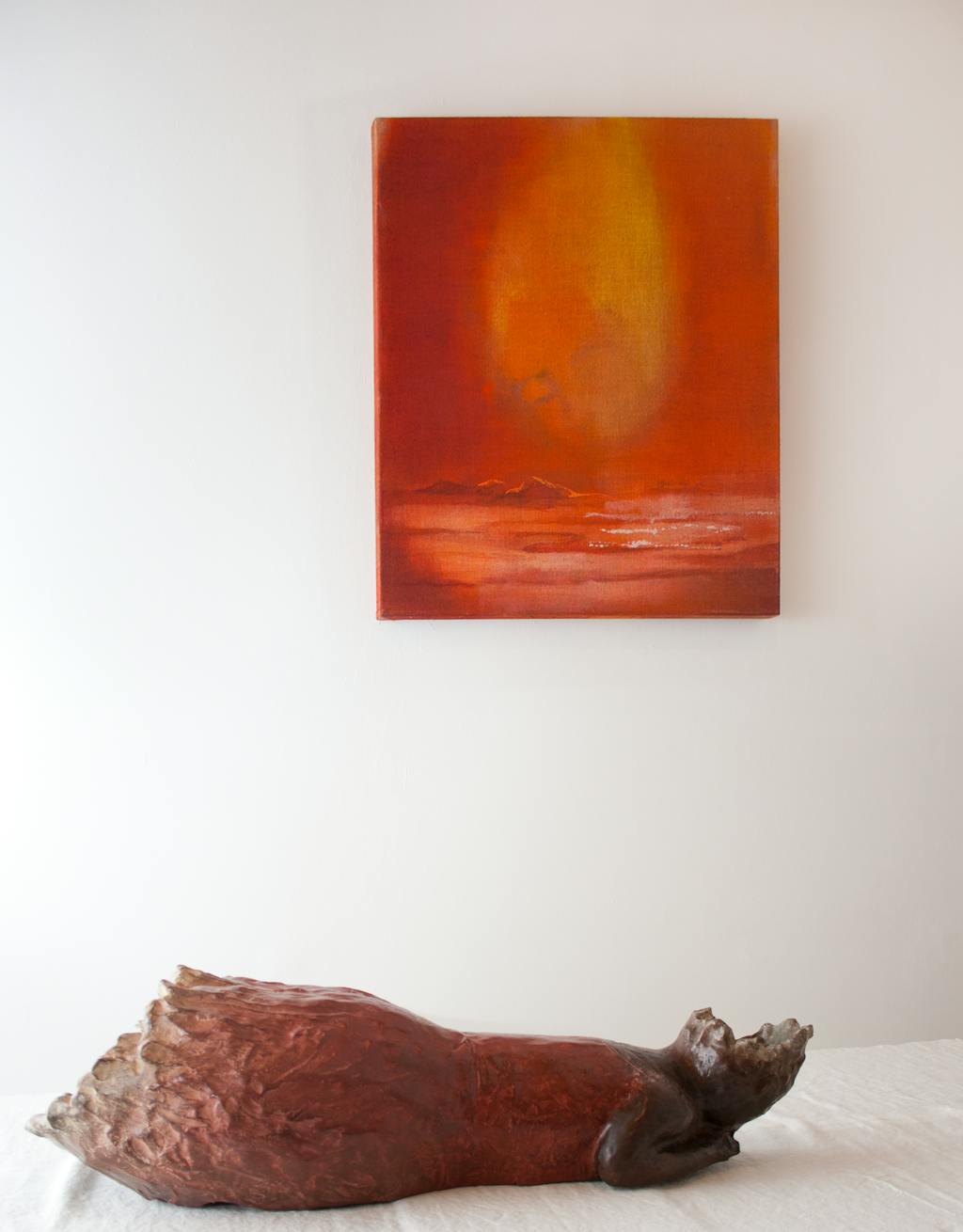The title "The Haunted" refers to the cycles of the work of Goya and indirectly to the years in which Ikemura lived in Spain during her studies, where she had at the age of 21, moved to from Japan. Leiko Ikemura defines Spain as her true birthplace, a place which profoundly influenced her approach to art and the iconography of her particular creations.
The exhibition, shows amongst others, two series of water colours, the first of which, comprises of 16 large format portraits. The watercolors in reddish shades hint at subtle transparent faces emerging from the pictorial world of Goya, mixed with portraits of Goya himself. His thoughtful stroke, playful and fleeting, the absences, the lack of definition always present with often only the suggestion of faces show, that, for Ikemura it is not so much about the performance itself or the resemblance to the model, but it is much more focused on going beyond what is defined. The pictures seem almost anonymous and evoke, through the abstract stroke and colour, landscape paintings and sculptures, a landscape of memories, an approach to Goya and an unconscious memory.
In addition to the series of portraits there is a large format on a rough cloth, ("Goya", 2008), which suggests a fragile figure reminiscent of Goya´s Duchess of Alba, also a sculpture of a woman, which Leiko Ikemura has positioned on the altar of the Oratory Sant Feliu, "Roten Kleid mit Liegende", (Reclining with a Red Dress) (1997/2008), a colourful bronze figure whose face lies hidden by arms and hands and whose undefined body, covered by a dress, seems to form a unit. With virtually no reliefs in the body, the head and the fullness of the skirt show a gap , making the body look like a transparent tube in space. This feminine being with a slightly full skirt, is a recurring theme in many of the artists works and appeared again in the exhibition of the "Red Madonna" terracotta (2013).
Placed near the complex representations of women, we can see the second series of 8 watercolor pieces "Contemporary Mexican faces" (2011) that, in contrast to the portraits of the women that we can almost feel, seem static. The portraits of nameless Mexican criminals, further highlight the artist’s skill with the faces shown as landscapes Blurred watercolor strokes express the abysmal and the incomprehensible, the violent and uncontrolled, the features of the images, almost brutal.. The portraits of the series are reddened and devoured cold, with the greenish tones with their watery blemishes and again the features of the faces are transformed into fluid landscapes. Ikemura converts the brutal faces into portraits that evoke the "ghosts", the horror and the spirits of the kingdom of shadows of Goya.
